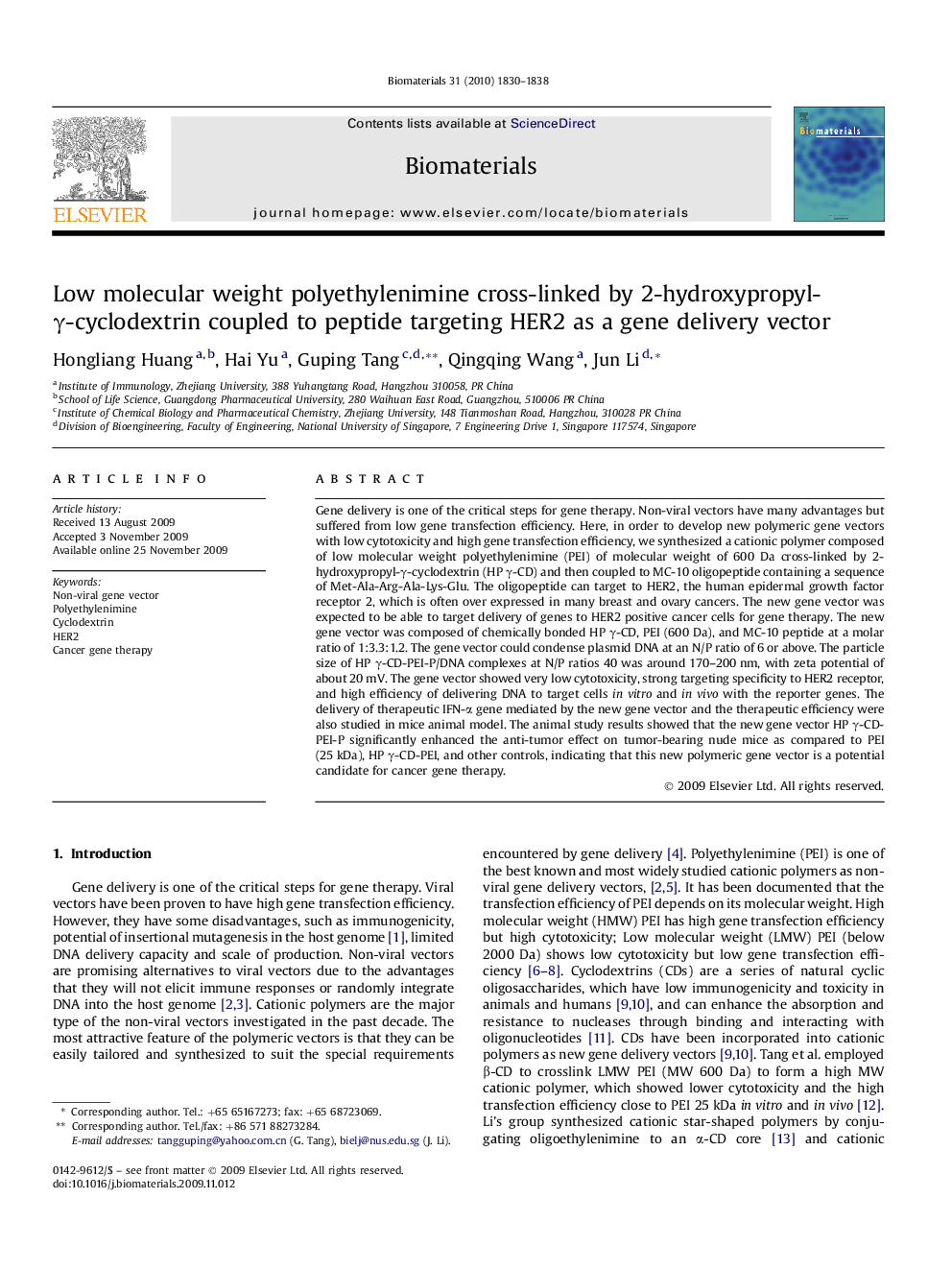| Article ID | Journal | Published Year | Pages | File Type |
|---|---|---|---|---|
| 9371 | Biomaterials | 2010 | 9 Pages |
Gene delivery is one of the critical steps for gene therapy. Non-viral vectors have many advantages but suffered from low gene transfection efficiency. Here, in order to develop new polymeric gene vectors with low cytotoxicity and high gene transfection efficiency, we synthesized a cationic polymer composed of low molecular weight polyethylenimine (PEI) of molecular weight of 600 Da cross-linked by 2-hydroxypropyl-γ-cyclodextrin (HP γ-CD) and then coupled to MC-10 oligopeptide containing a sequence of Met-Ala-Arg-Ala-Lys-Glu. The oligopeptide can target to HER2, the human epidermal growth factor receptor 2, which is often over expressed in many breast and ovary cancers. The new gene vector was expected to be able to target delivery of genes to HER2 positive cancer cells for gene therapy. The new gene vector was composed of chemically bonded HP γ-CD, PEI (600 Da), and MC-10 peptide at a molar ratio of 1:3.3:1.2. The gene vector could condense plasmid DNA at an N/P ratio of 6 or above. The particle size of HP γ-CD-PEI-P/DNA complexes at N/P ratios 40 was around 170–200 nm, with zeta potential of about 20 mV. The gene vector showed very low cytotoxicity, strong targeting specificity to HER2 receptor, and high efficiency of delivering DNA to target cells in vitro and in vivo with the reporter genes. The delivery of therapeutic IFN-α gene mediated by the new gene vector and the therapeutic efficiency were also studied in mice animal model. The animal study results showed that the new gene vector HP γ-CD-PEI-P significantly enhanced the anti-tumor effect on tumor-bearing nude mice as compared to PEI (25 kDa), HP γ-CD-PEI, and other controls, indicating that this new polymeric gene vector is a potential candidate for cancer gene therapy.
